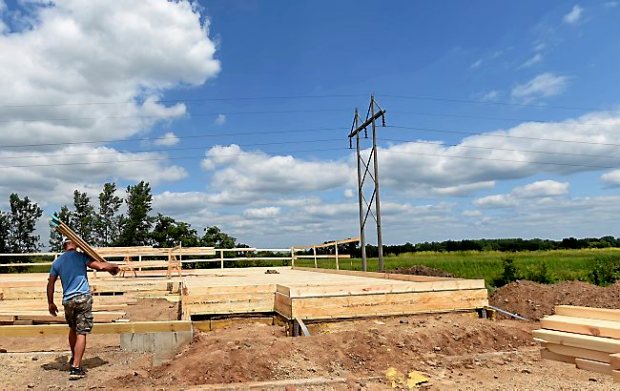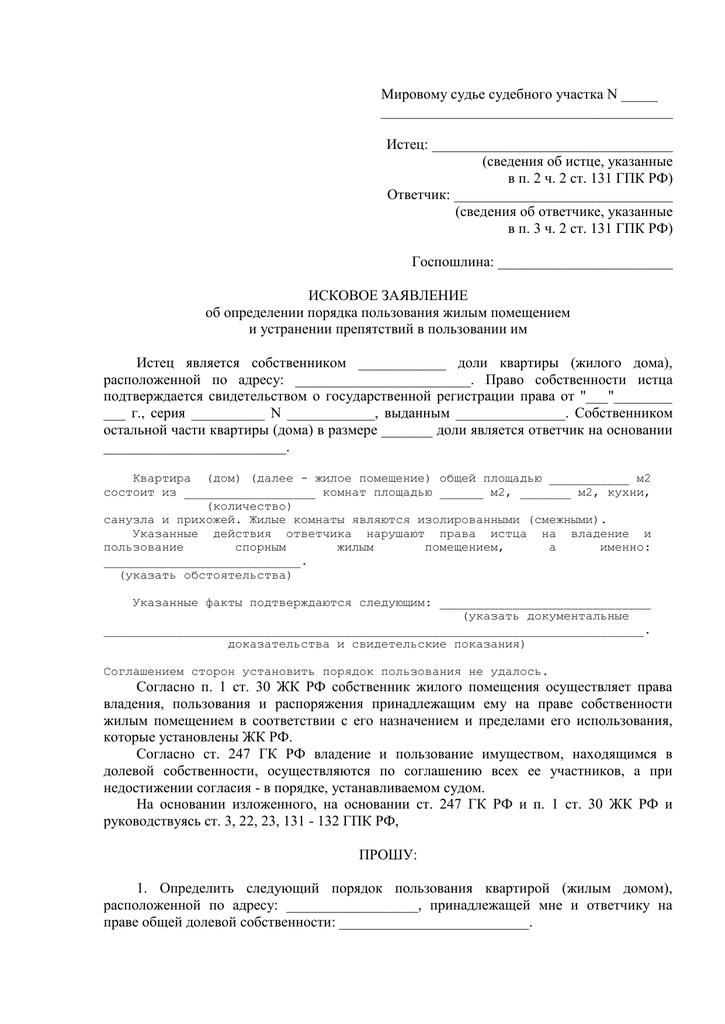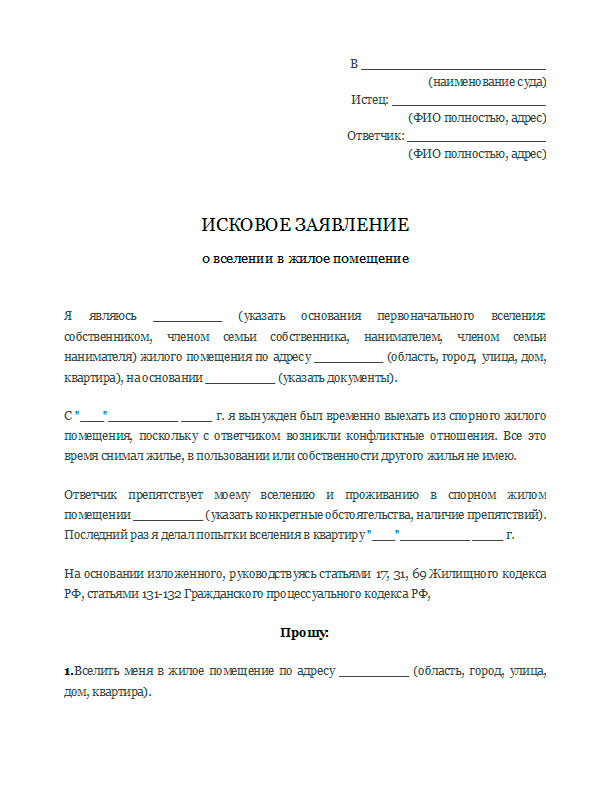What is a negative claim? An example, norms and rules of compilation - all this in the article. After all, a violation of property rights can be expressed not only in depriving the rightful owner of the right to own his own thing. The violation may not even affect the right of ownership, but be expressed in limiting the powers of the owner in other areas that do not allow him to properly exploit and use the property.
What it is?
Negative claim (a sample is given below) - this is the requirement of the property owner to third parties to remove obstacles associated with free ownership and disposal of property. In fact, these are requirements that relate exclusively to the removal of obstacles that do not allow the use of property to the owner.
This is a non-contractual requirement, and the term "negative" from the Latin language is translated as "negative".

Statement of evidence
Only a property owner or a title holder, an owner with limited rights is entitled to go to court with a negative claim (an example is given below). Moreover, it does not matter how long the plaintiff has owned the property, and on what legal grounds it was acquired.
In addition, when applying to the court it will be necessary to prove the fact of violation of rights and establish a causal relationship in the lawsuit. Simply put, you have to prove that it is the defendant who violates the rights of the property owner.
Moreover, the defendant is not deprived of the right to provide evidence refuting the plaintiff's allegations.

Subject and grounds
The subject of a negative claim (examples from real cases prove this) may be the requirement to eliminate excessive noise. In economic activity, disputes often arise regarding the non-admission to the territory of the rightful owner, by issuing protection or an unauthorized shutdown of electric energy, illegal seizure. Another striking example is when the executive service describes and seizes the property of a debtor and another person who has no debts and is the rightful owner. A claim may be made regarding the prohibition of illegal construction. And it is allowed to put forward even at the stage of designing a building or structure.
Drawing conclusions from judicial practice, a negative claim (example below) is still not a reason to satisfy material claims. They are designed to force the defendant to stop violating the rights of the plaintiff. Therefore, the text of the application to the court may contain exclusively a requirement to eliminate certain violations.
On the other hand, in judicial practice there are cases when a judge not only made a decision to remove obstacles, but also awarded the defendant with the obligation to compensate non-pecuniary damage. The simplest example is when the plaintiff appealed to the court with a request to demolish the annex to the apartment building where gas welding was carried out (constructed without the consent of the competent authorities).
The extension was built under the windows of the plaintiff and significantly worsened his living conditions. In parallel with the removal of obstacles to living, the plaintiff asked for compensation for moral damage, because he experienced discomfort and irritation. As a result, the court ruled on the demolition of the extension and partially satisfied the requirements for compensation for moral damage.
It is not allowed to put forward claims on a negative claim regarding the use of another's property, for example, on establishing easement on someone else's land.

Limitation of actions
Since in a negative claim (there may be a lot of examples of reasons for its preparation) the object of the requirements is the elimination of a continuing offense, the statute of limitations does not apply to such cases. The main thing is that at the time of filing, the offense regarding property has not already been eliminated.

How to file a lawsuit: registration rules and sample
A negative lawsuit in civil law (see example below) is quite common and must comply with the requirements of applicable law. A unified form is not provided, but still it is necessary to adhere to the following structure of the document:
- In the upper right corner are registered the details of the court, address. The data of the plaintiff and defendant are indicated below.
- In the middle of the document is written the name of the claim and a brief description of the essence of the dispute.
- Next is the "body" of the document. This part of the document describes the current situation, which became the reason for going to court.
- After a brief description of the problem, the requirements for the defendant are put forward.
At the end of the document, the annexes to the statement of claim are indicated, the date, signature and full name of the plaintiff are put. In the annexes to the application, copies of title documents on the property of the plaintiff must be present without fail.
An example of a negative claim:
- Name of court ...
- Details of the plaintiff and defendant ...
- SUGGESTED STATEMENT (reason) on the removal of obstacles to the use of the premises (without a dot)
- By order of the administration ... .. district ... number ... date ... I was provided with a land plot with a total area .... Ha ... at the address ... .. Date ... the land plot was registered in the manner prescribed by law, which is confirmed by documents ... F. I.O. arbitrarily moved the fence, which I installed legally, which violated my rights and illegally reduced the area of my land. The plaintiff is the owner of a land plot with a total area of ... ha ... located at: .... and has common borders with my site (the essence of the claim).
- Due to the fact that the defendant refused to voluntarily eliminate the violations on his part, on the basis of Articles 12, 304 of the Civil Code and Article 100 of the Civil Procedure Code of the Russian Federation (grounds),
- I ASK (request to court)
- Oblige the defendant ... f. I. Oh .. not to obstruct me in exercising the powers of the owner of the land located at: ....
- Applications ...
- Date, full name and signature of the plaintiff.

National tax
When filing a claim should rely on Art. 333.19 of the Tax Code for determining the amount of state duty. The article states that the size of the fee for claims of a non-property nature is determined for individuals in the amount of 200 rubles, and for legal entities 4000 rubles.

Differences from other species
Vindication and negative lawsuit - protect property rights. These two documents have significant similarities, but also have criteria that allow them to be clearly distinguished:
- By object requirements. A vindication statement implies a demand for a return from illegal possession, while a negative statement requires the removal of obstacles to use.
- On the sides of the dispute. In both cases, the plaintiff may only be the rightful owner or title owner. In a negative process, claims are made against a person who impedes the use of property, and in a vindication process, against the actual owner of the property.
- Limitation of actions. For a negative claim, it does not apply. And for Vindikatsonny provided for 3 years.
And the main difference is a negative lawsuit in civil law (an example is given in the text) that implies protection of the right to use, and vindication - protection of property rights.Although in life, the line between these types of requirements is very thin and it is often very difficult to immediately determine which type should be presented until all the circumstances of a particular dispute are detailed.

Conclusion
What is a negative claim? Examples and samples confirm that this is a requirement to remove obstacles to the use of one's own property. The plaintiff may be solely the owner or title owner. It can even be tenants of real estate, as title owners, who are entitled to put forward a requirement to remove obstacles to the use of leased property by third parties.
In this case, the defendant may be only a person who does not have ownership rights to the property and is not even the actual owners, but by his actions creates obstacles to the use of the rightful owner. The main thing is that such actions be unlawful.
When considering examples of the preparation of a negative claim, it should be noted that it is necessary to rely on the general rules for the preparation of claims. It is better to consult with a lawyer about this.
The lawsuit does not apply to claims for the removal of obstacles to the use of property. Claims can be made in court at any time as long as there are obstacles to the use of property, regardless of the date they started.
